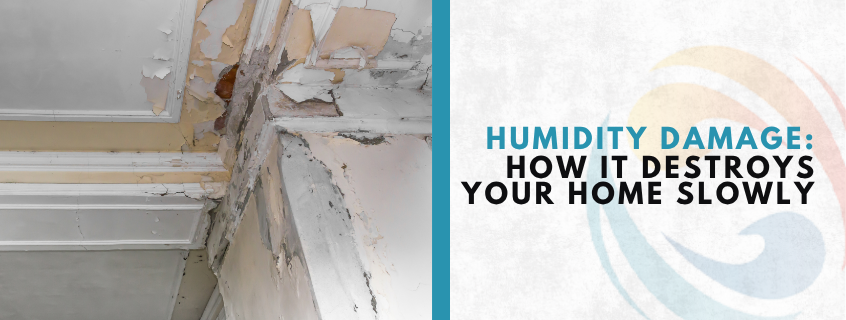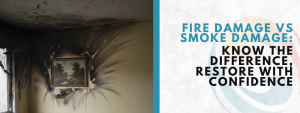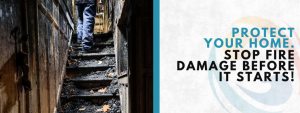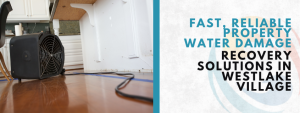
Imagine waking up in a cozy house where everything looks perfect on the outside—but deep inside, something is quietly causing harm. That silent troublemaker? Humidity. It doesn’t shout or crash like a storm. It sneaks in, settles quietly, and slowly eats away at your home without making a sound.
Most homeowners don’t realize the real damage humidity can cause until it’s too late. And by then, repair costs can be high, walls might be warped, wood panels ruined, and health problems may have already started. That’s the truth about humidity damage—it doesn’t destroy in a day, but it destroys for sure.
If you’re worried about unseen moisture taking over your home, don’t wait until it’s too late—learn how to protect your space from hidden water damage threats before the costs escalate.
Let’s walk through the hidden path humidity takes inside your home and what you can do about it—before it’s too late.
Behind the Walls: What Humidity Is Doing When You’re Not Looking
Humidity damage starts with the air around you. It doesn’t matter if your house is brand-new or a century old—moisture doesn’t discriminate. When there’s too much of it, surfaces start to suffer. Your walls might seem fine, but behind the paint or wallpaper, mold can begin to grow. Wooden surfaces swell. Paint starts bubbling.
Here’s what happens:
- Moisture seeps into walls, causing bubbling paint, peeling wallpaper, and sagging drywall.
- Wooden floors and furniture swell, leading to cracks and joint loosening.
- Metal fixtures rust, including screws, nails, and fasteners in your home’s structure.
- Mold spores spread, triggering allergies, breathing problems, and that musty smell you can’t shake.
This is where professional water restoration services can make all the difference—tackling what’s hidden before it becomes a full-blown crisis.
Warning Signs of Humidity Damage You Should Never Ignore
Not all signs of humidity damage are obvious. Sometimes it hides behind walls, under the carpet, or inside air vents. Other times, it shows up in the things we often ignore.
Here are the most common signs you shouldn’t ignore:
- Musty Smell in Certain Rooms
That earthy, damp scent is one of the first giveaways. - Foggy Windows
If your windows fog up often, that’s indoor moisture trying to escape. - Peeling Paint or Wallpaper
This means water is trapped behind the surface. - Black or Green Patches (Mold or Mildew)
Usually in bathrooms, closets, basements, or even ceilings. - Warped or Buckling Floors
Wood floors that look uneven or planks that don’t line up are reacting to humidity. - Condensation on Pipes and Toilets
This could be harmless at first, but over time, it points to too much humidity indoors.
Keep your eyes open. Spotting these signs early is key to stopping humidity damage before it becomes a serious problem.
Beautiful but Fragile: How Wood Panels React to Humidity
Wood is beautiful. It adds warmth, texture, and elegance to a space. But wood is also vulnerable—especially to humidity. When moisture gets in, it doesn’t just sit still. It moves. Expands. Contracts. Warps.
Popular Wall Wood Panel Types and Their Reactions to Humidity:
| Panel Type | Vulnerability to Humidity | Behavior When Exposed |
| Solid Wood | High | Warps, cracks, swells |
| MDF (Fiberboard) | Very High | Swells, disintegrates |
| Plywood | Moderate | Delaminates, warps |
| Shiplap | High | Gaps, buckling |
| Beadboard | Moderate | Mold growth possible |
| Reclaimed Wood | Variable | Maybe pre-treated, varies |
Even though you may choose a high-quality panel, improper sealing or poor ventilation will still allow humidity damage to set in. The beauty of wood can turn into a nightmare of repairs and replacements.
It Starts with a Drip: Where Indoor Humidity Comes From
Let’s say it rains heavily. You clean the water and assume the job’s done. But inside your walls or under your floors, water might still linger. Days go by, and what seems dry outside is soaking inside. That’s when humidity begins its quiet destruction.
Humidity often becomes a problem after:
- Leaks (roof, windows, or pipes)
- Floods
- Steam buildup from cooking or hot showers
- Poor air circulation in small rooms or closets
- Poor insulation or sealing in older homes
This is why smart homeowners use basement maintenance tips regularly to catch early signs of excess moisture. Applying these same tips throughout your home ensures you’re staying ahead of potential water damage and mold growth.
Not Just Damp—Dangerous: What Humidity Levels Mean
People often think damage only happens when water floods a room. But the truth is, even just high humidity levels without actual water can cause severe problems over time.
Humidity Level Impact Chart:
| Humidity Level | Impact |
| Below 30% | Dry air, cracks in wood, static electricity |
| 30%–50% | Ideal range, healthy for people and homes |
| 50%–60% | Triggers mold, mildew, and dust mites |
| Above 60% | Promotes fast mold growth, wood warping, paint damage |
Once your home regularly stays above 60% humidity, you’re inviting humidity damage to take root—even in humid climates like the coast. Residents concerned about indoor moisture can explore Water Damage Restoration Manhattan Beach to act before damage sets in.
Proven Prevention Tips to Keep Humidity from Ruining Your Home
The best way to fight back is prevention. If you’re wondering what you can do today, here’s a quick list that could save your home thousands in repairs later.
Top Ways to Prevent Humidity Damage:
- Use a Dehumidifier – Especially in basements, bathrooms, or muggy rooms.
- Install Exhaust Fans – Kitchens and bathrooms need good airflow.
- Seal Leaks Immediately – Windows, doors, roofing—don’t delay.
- Upgrade Insulation – Keeps outside humidity out.
- Check for Condensation – Watch for sweating on pipes or windows.
- Maintain Gutters and Downspouts – Prevents water from pooling near your foundation.
- Ventilate Your Attic – Trapped heat and moisture rise.
- Schedule Annual Inspections – Professionals can spot hidden warning signs.
Incorporate these basement maintenance tips into your seasonal home checklist, especially if you’re in Water Damage Restoration Pacific Palisades zones, where humidity is often underestimated.
Humidity’s Already Inside—Now What?
Even with prevention, unexpected events happen. Roofs leak. Pipes burst. Storms hit. The longer the moisture lingers, the more damage it causes.
And when you’re in high-humidity regions like Water Damage Restoration Pacific Palisades, fast action is essential to stop mold and wood decay before it spirals out of control.
Use these basement maintenance tips consistently to avoid big problems. When necessary, call professionals who can handle what’s hidden behind your walls.
Humidity Doesn’t Shout—It Waits. But Now You Know Better.
You’ve seen the signs. You know what’s at risk. And now, you have tools to prevent it.
Apply these basement maintenance tips and stay ahead of moisture threats.
If the damage is already happening, don’t let it get worse—act today.
Because when it comes to humidity damage, slow doesn’t mean harmless—it just means it hasn’t finished yet.
Frequently Asked Questions About Humidity Damage
How do I know if humidity is damaging my home?
Look for musty odors, foggy windows, warped wood, or peeling paint—these are early signs of hidden moisture. If you see mold spots or feel dampness in walls or floors, humidity damage may already be underway.
Can humidity damage happen even if there’s no visible water?
Yes, high humidity alone can lead to mold growth, wood warping, and damage behind walls or ceilings. You don’t need a leak or flood for long-term moisture problems to begin.
What’s the ideal humidity level to prevent damage?
Keep indoor humidity between 30% and 50% for best protection. Anything above 60% increases the risk of mold, mildew, and material damage.
Should I hire a professional if I notice signs of humidity damage?
Yes, professionals can detect hidden moisture and stop it before it spreads. Fast action prevents costly structural damage and protects your indoor air quality.
What can I do today to protect my home from humidity?
Use dehumidifiers, ventilate damp areas, and seal any leaks around windows or pipes. These simple steps help stop humidity damage before it starts.





